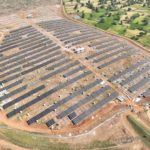Products You May Like
The Indian Central Electricity Authority (CEA) has issued a recommendation for state utilities and renewable energy project implementers to integrate energy storage systems with solar photovoltaic (PV) installations in upcoming tender processes. This guidance aims to enhance the reliability and efficiency of solar energy projects by addressing one of the critical challenges in renewable energy generation: intermittent supply due to varying sunlight conditions.
Co-locating energy storage systems, such as batteries, with solar PV can provide numerous benefits. One of the primary advantages is the ability to store excess energy produced during peak sunlight hours. When solar generation is high and demand is lower, stored energy can be harnessed later during periods when solar generation decreases, such as during cloudy days or at night. This capability facilitates a more stable and continuous power supply, ultimately leading to improved grid reliability and a reduction in dependency on fossil fuels.
The CEA’s recommendation comes in light of the Indian government’s commitment to boosting the share of renewable energy in the national energy mix. India has set ambitious renewable energy targets, aiming for 175 GW of renewable capacity by 2022, and striving for 450 GW by 2030, focusing largely on solar and wind energy. As such, integrating storage with solar power generation plays a vital role in achieving these targets by making renewable sources more dispatchable, encouraging wider adoption, and ensuring energy security.
Additionally, co-location can lead to reduced costs associated with the installation and operation of energy storage systems. By integrating both technologies on the same site, project developers can optimize land use and reduce logistical complexities. This can help lower overall project costs, making solar PV projects more economically viable.
Moreover, this approach aligns with the global trend of enhancing energy resilience and sustainability through technology advancements. As energy storage technologies continue to evolve, reducing costs and increasing efficiency, their integration with solar PV is likely to become more commonplace in the Indian energy landscape.
In summary, the Central Electricity Authority’s guidance for co-locating energy storage systems with solar PV projects represents a strategic move toward enhancing renewables’ effectiveness in India’s energy sector. By addressing intermittency issues and offering economic advantages, this initiative supports the country’s broader goals of energy sustainability and independence while paving the way for a more reliable power supply.
